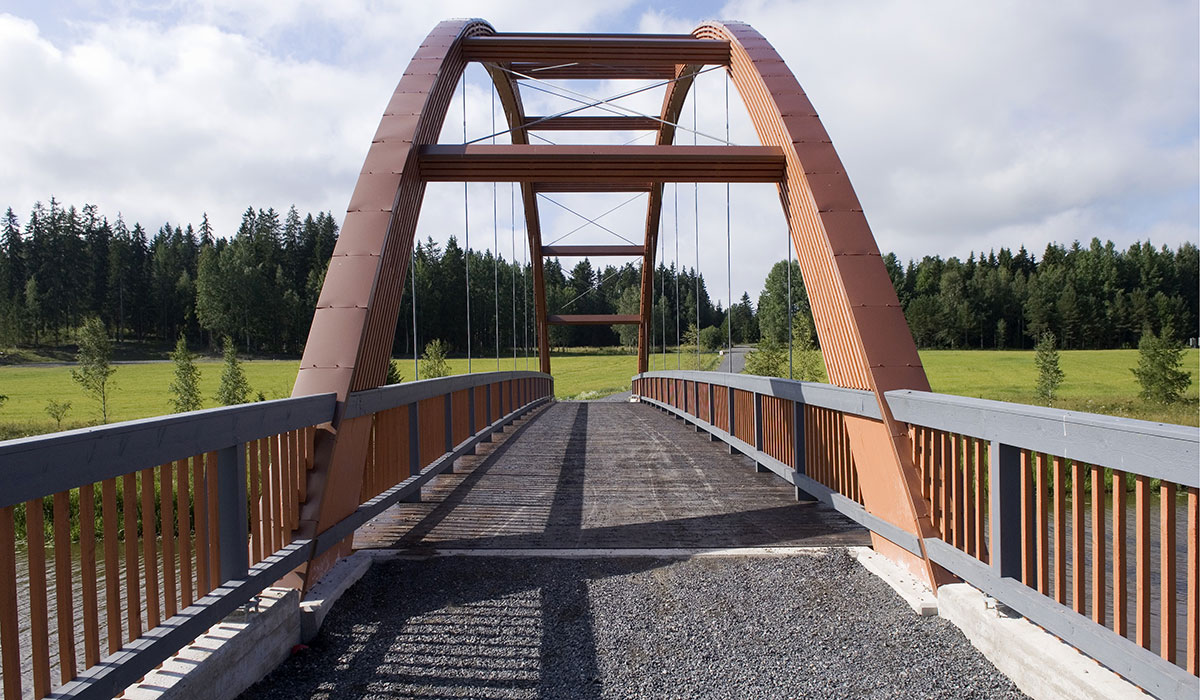
In the three-hinged arch "thermal expansion and contraction of the arch will cause vertical movements at the peak pin joint but will have no appreciable effect on the bases," which further simplifies foundational design.

Another advantage of the three-hinged arch is that the pinned bases are more easily developed than fixed ones, which allows shallow, bearing-type foundations in spans of medial length. It is most often used for spans of medial length, such as those of roofs of large buildings. Unlike the other two kinds of arch, the three-hinged arch is therefore statically determinate. This kind of arch is thus not subject to additional stress from thermal change. The additional apical connection allows the three-hinged arch to move in two opposite directions and compensate for any expansion and contraction. The three-hinged arch is not only hinged at its base, like the two-hinged arch, yet also at its apex. However, this can result in additional stresses, and therefore the two-hinged arch is also statically indeterminate, although not as much as the fixed arch. Unlike that of the fixed arch, the pinned base can rotate, thus allowing the structure to move freely and compensate for the thermal expansion and contraction that changes in outdoor temperature cause. This kind of arch has pinned connections at its base. The two-hinged arch is most often used to bridge long spans. Because it is subject to additional internal stress from thermal expansion and contraction, this kind of arch is considered statically indeterminate. The fixed arch is most often used in reinforced concrete bridges and tunnels, which have short spans. The most common kinds of true arch are the fixed arch, the two-hinged arch, and the three-hinged arch.

Rossgraben bridge ( Rüeggisberg) near Bern, Switzerland, showing the hinge at mid-span of this three-hinged arch.


 0 kommentar(er)
0 kommentar(er)
